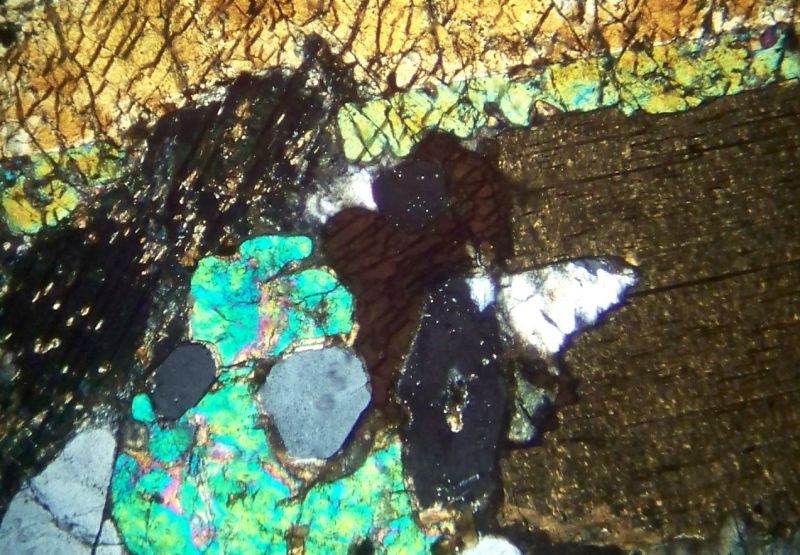 |
| A diamond crystal from Crater of Diamonds State Park, Arkansas Photo by Rob Lavinsky |
Diamonds don’t grow overnight because
in nature their growth proceeds one atom of carbon at a time with four carbon
atoms bound together by chemical bonds.
The natural way that this bonding occurs will normally create a crystal
that is an octahedron in shape. This
shape however can be altered by several different parameters imposed by the
space allocated to the growth of the crystal in the media in which it is
formed. In the process of growing
diamonds are apt to include small crystals of the surrounding material into
their crystal shape. These inclusions
are literally windows into the mantle of the earth that are brought to the
surface when the diamond is carried to the surface of the earth by a kimberlite
or lamproite.
Diamonds are nothing more complicated then a crystal of
pure carbon, and are in fact an allotropic form of an element that can have
other crystalline forms either amorphous as lampblack or as graphite from which
we make pencils. There is another rarer amorphic
form of carbon termed ‘lonsdalite’ that is somewhere between graphite and
diamond in physical structure. Lonsdalite is not a variety of diamond but is
instead a different material. In
lonsdalite there is a repeating networking of carbon atoms that all point in
the same direction rather then alternating back and forth as in a diamond. Its crystals instead of forming cubes or
tetrahedra as the diamond does are instead hexagonal. Although it is often found with diamonds it
is considered to be an allotropic form of carbon formed as the result of shock from
a large meteorite.
From work performed on some of the diamonds from the Ekati
diamond mine in the Northwest Territories of Canada it would appear that the
growth of diamond crystals begin with a small fragment of graphite upon which
the diamond crystals are deposited over time.
A matter of controversy is the actual speed in which diamond crystals
are formed. Experiments in Japan
with manmade diamond crystals suggest that it is possible to grow a ten caret
crystal in several hundred hours. This
of course is under ideal conditions and in nature would probably take much
longer as the diamond crystal would have to scavenge its carbon atoms from the
surrounding rocks. Carbon is a rare
element in the earth’s rocks.
Most of the carbon available to create a diamond has been
postulated to come from oceanic crust that has been subducted beneath a
continental crust as deceased life forms of coral reefs with the necessary
temperature to cause their disassociation into the components making up the
coral reef. This would be carbon and the
carbonate radical. The calcium or
magnesium from this reaction would be incorporated into the earth’s
mantle. Whatever free carbon remains
from this reaction would be available at this temperature and pressure to form
diamond crystals.
As the diamond crystal grows it is also scavenging other
elements that are incorporated into the crystal as crystal defects. The most common of these elements are
nitrogen and iron. These elements cause
the diamond crystal to become colored with the coloration being dependent upon
the amount of these elements.
References:
The Nature of Diamonds, http://www.amnh.org/exhibitions/diamonds/
Mineralogical Association of
Canada, Editor Lee A. Groat, Geology Of Gem Deposits, Short Course Series,
Volume 37, Yukon Geological Survey, © 2007, Yellowknife, Northwest TerritoriesGem Deposits, http://amonline.net.au/geoscience/earth/gem.htm
Geology of Gem Deposits, Mineralogical Association of Canada, Editor Lee A. Groat, http://www.mineralogicalassociation.ca/doc/promo_SC37.pdf Volume 37 © 2007
-Calcite-290699.jpg)





